Earlier this year, Autograph's Curator Bindi Vora was invited to take part in the South Asia Incubator programme hosted by Photo Kathmandu as a mentor, to consider how we could foster dialogues with emerging and mid-career visual practitioners from across South Asia to engage and learn more about their work, through an open call programme.
Over five days she engaged with 11 lens-based practitioners from across the region including Nepal, Sri Lanka, Myanmar, Bangladesh, Pakistan, Afghanistan, Iran, Maldives, Bhutan and India. Vora stated: "their talent was palpable and their messages urgent". Keep scrolling to see a selection of their work addressing issues of community, activism and exile.
The Incubator program is designed to create a platform for emerging and mid-career visual practitioners from across South Asia to engage with mentors and institutions from around the world who research, exhibit, publish, and support lens-based practices. It asks us all to consider the socio- economic, political, and cultural contexts in which they work, offer general mentorship on how to grow their practices, approach grants, exhibitions, residencies and navigate professional ecosystems.
Abdul Halik Azeez trained as a journalist, economist and linguist whilst migrating to becoming an artist since 2015. Drawing from the post-war landscape of Sri Lanka, his work reflects on technologies of power as mediated through contemporary culture, narratives of progress, lived experiences and media.
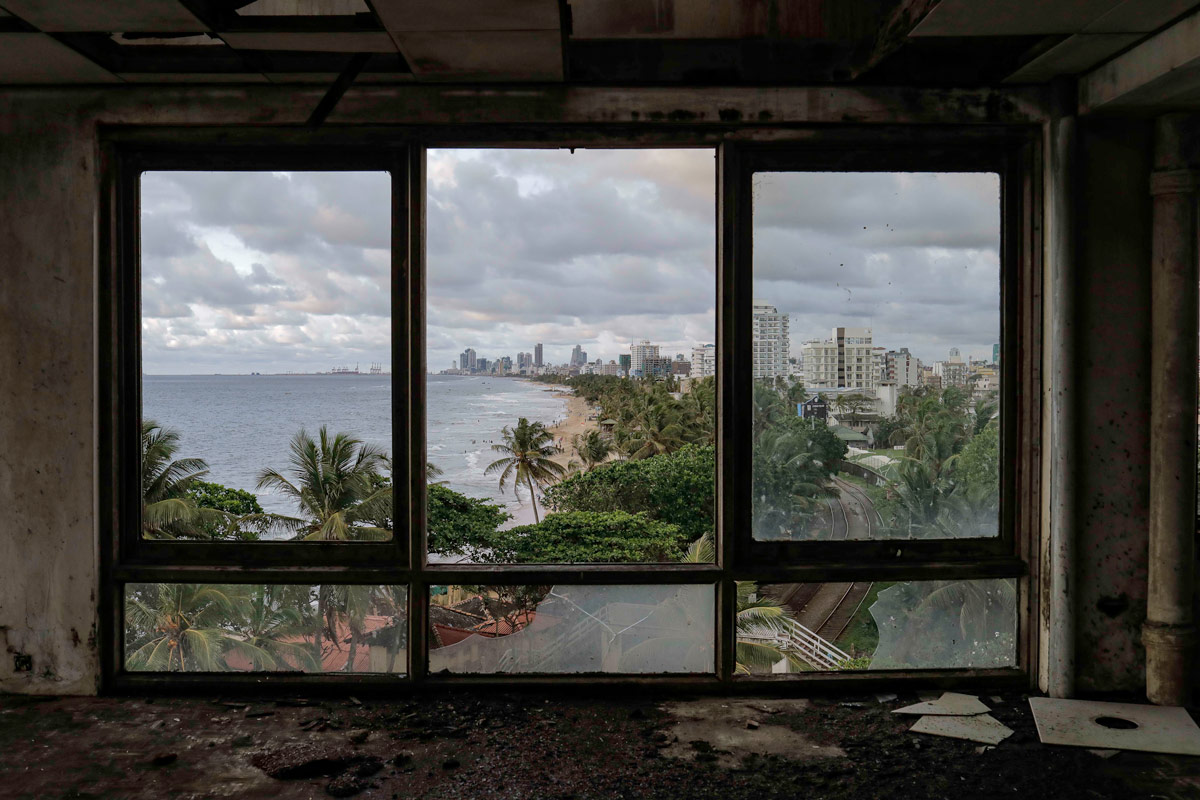
Tilly’s Beach Hotel, owned by a Tamil entrepreneur, was a successful establishment frequented by residents of Colombo and tourists alike. It was set on fire and looted by anti-Tamil mobs in 1983.
The burnt husk of this building stands to this day as a memorial to the ethnic violence that sparked Sri Lanka’s 30 year long civil war. From its topmost floor one can see Colombo’s modern post-war skyline, where The Lotus Tower peeks out from behind a starchitect built office and residential complex.
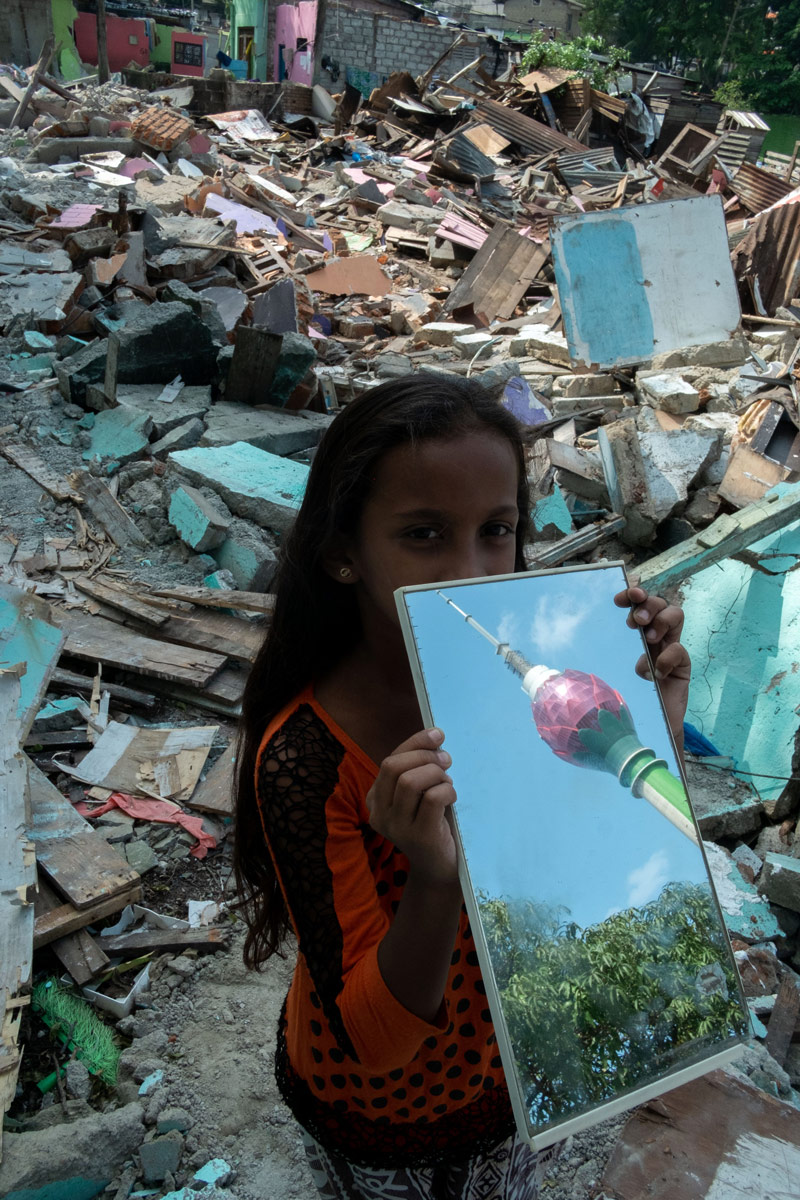
The Lotus, a symbol of purity in Buddhism due to its beauty and serenity as it rises out of the mud, is transformed into a symbol of Colombo’s dream of becoming a 'World Class City'.
The Lotus Tower signifies Colombo’s process of purification and transformation from ‘unclean’ to ‘clean’. This image was taken at a neighborhood which was forcibly evicted from their low-income housing in order to beautify the landscape surrounding the tower.
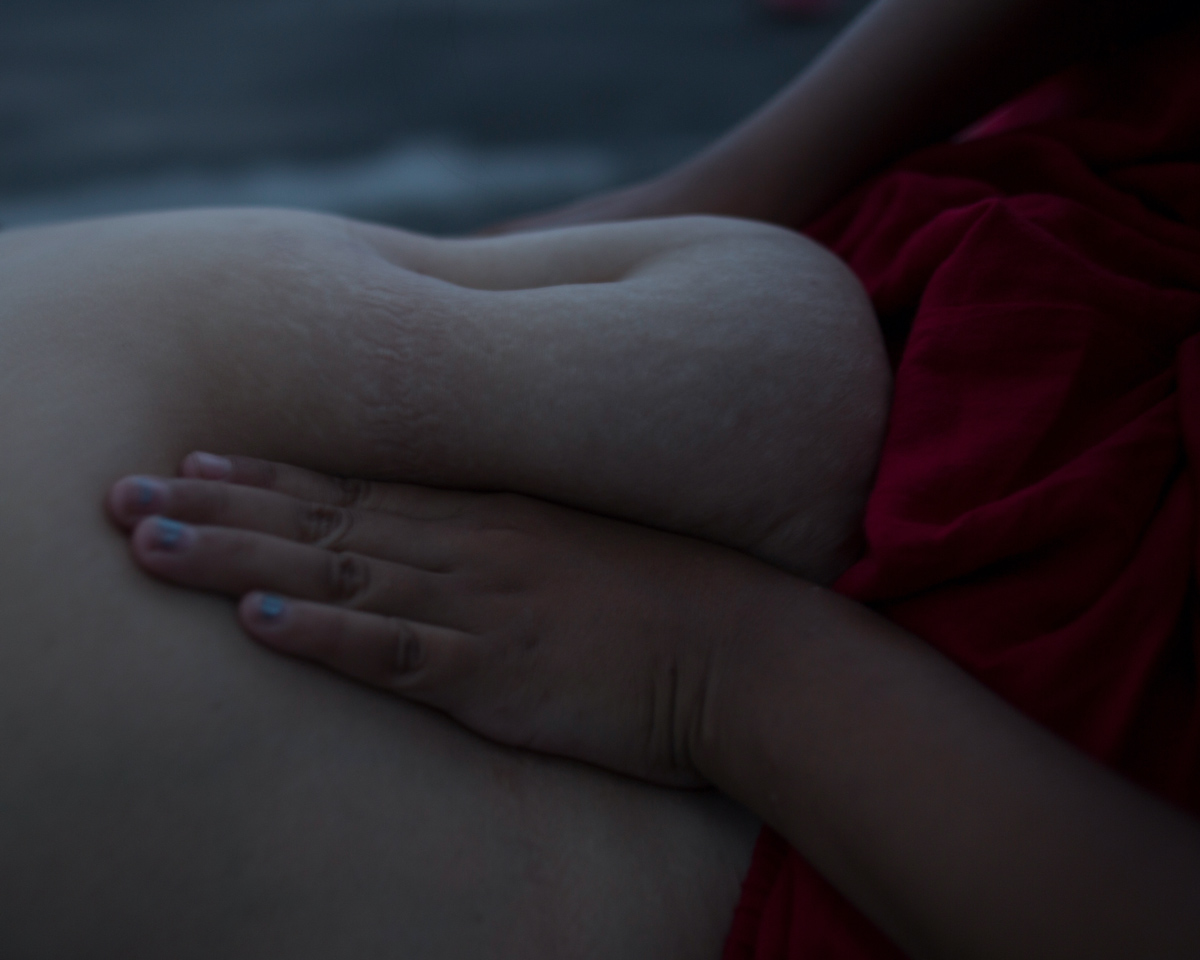
I was confined for twelve days. Restricted from going out into the sunlight, from seeing any male family members. Filled with fear and uncertainty. I still remember those days and nights, my eyes fixed on the ceiling while rays of light came and went.
This was my first period.
It took time to grasp the taboo surrounding menstruation –– I’m still trying to understand it.
Parisa Azadi is an Iranian-Canadian visual journalist and artist with a keen interest in history and conflict, memory and displacement. For over a decade, Parisa has reported politically sensitive issues such as missing and murdered Indigenous women in Canada, the Syrian refugee crisis in Jordan and religious extremism in South Asia. Since 2015, Parisa has been working in the Middle East, examining the nuanced dynamics of communities living in the aftermath of political violence.
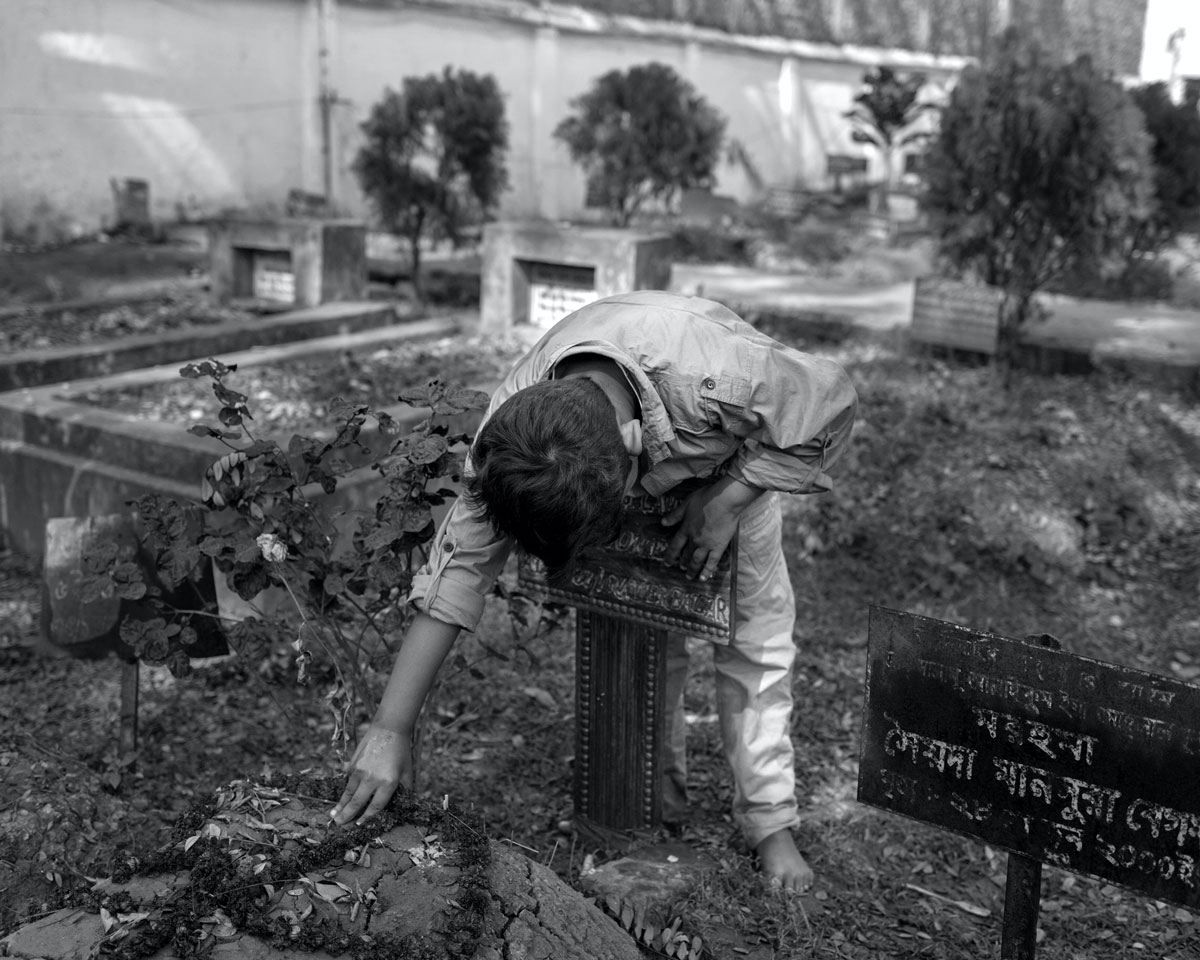
Birds Are Pilgrims, Too is a meditation on grief, tradition, and remembrance in the wake of tragedy with Hussaini Dalan, a congregation hall for Shia Muslims in Dhaka, Bangladesh, as its central subject. Bombed by Pro-Islamic State militants in 2015 during an annual mourning procession, Hussaini Dalan remains a holy site for people of diverse faiths to gather daily for meditation and prayer.
Birds Are Pilgrims, Too highlights the impetus for harmony amid sporadic sectarian violence and considers the social and cultural complexities of Shia identity and its influence across the Muslim world.

"Ordinary Grief considers what it means to forget and what it means to (try to) remember. After 25 years, I returned to Iran to reclaim my identity and history, to reconcile despair with joy.
Straddling the line between East/West and insider/outsider, my experiences of Iran are difficult, unromantic, fragile. My images foreground ordinary Iranians creating new futures for themselves, depicting moments of serenity, celebration, and ritual in the shadow of perpetual grief. They mark the passage of time as they document physical, emotional, and political limbo: they question what it means to long and to belong."
Aungmakhai Chak is from ‘Chak’ community, one of the 11 indigenous communities in Chittagong Hill Tracts, Bangladesh. Politics of identity and representation is Aungmakhai’s primary interest. She uses mythologies, folklores and current political climate in her work. She is also keen on exploring how time & space is related with these themes.
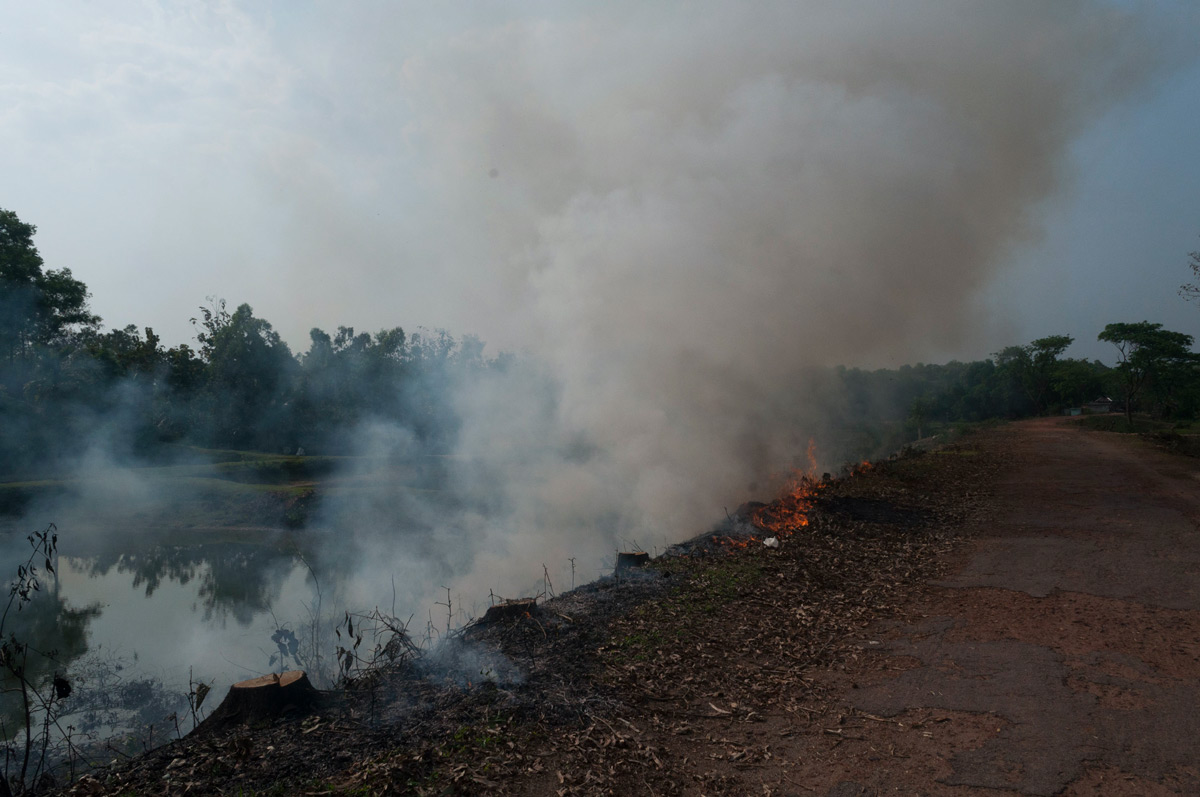
Similar to indigenous peoples in other parts of the world, the indigenous peoples in Bangladesh have a close tie with nature which is visible from the items they use in daily life. However, under the influence of mainstream culture within the country and globalization, these traditions and attachment to nature are fading away day by day.
The photo story portrays my indigenous identity in the changing world. As we are shaped by our immediate environment, my existing lifestyle is a fusion of cultures with an indigenous root.
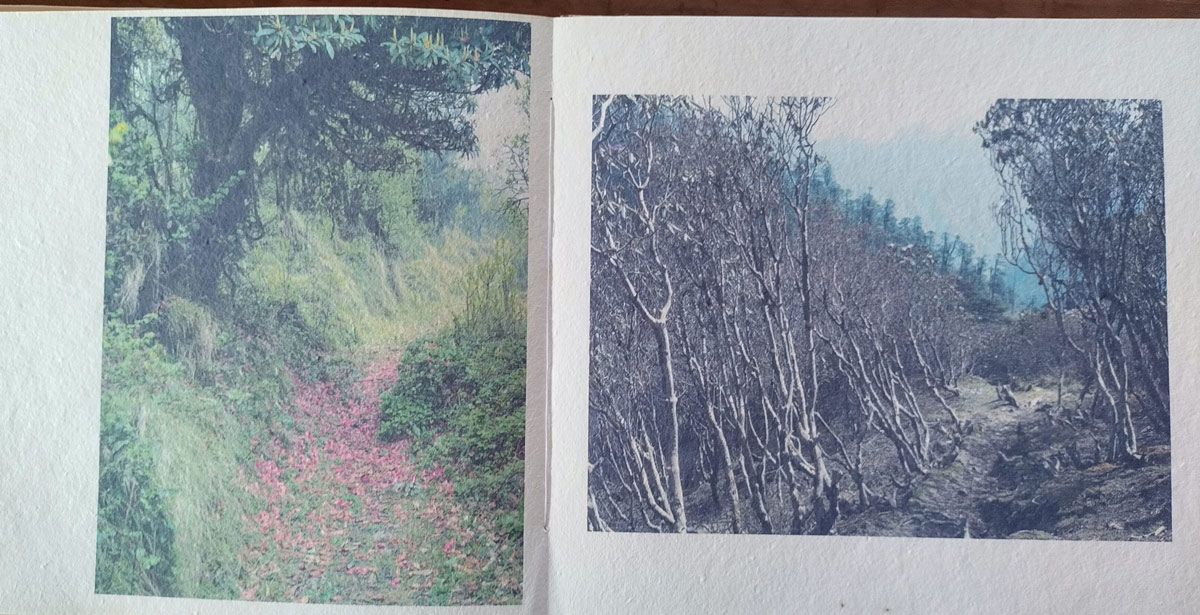
"My initial thought for presenting Song Of Silence was by exploring print media. More specifically, I was keen to develop handmade paper, to have a connection with the printing process rather just photographs.
It was an exciting experiment: to learn the paper making process and combine it with the printed photographs. In reality, it was nearly impossible to print locally on handmade paper, as it produces a lot of dust which is harmful to printers. Despite the barriers, I am still concentrating on the idea that I've imagined. Hopefully someday it'll trigger a new form.”

"I visited five districts of Sindh during peak flooding and more recently when the water levels had relatively receded. While the cities were abuzz with relief activities, the rural population had been left at the mercy of nature.
Neither the state nor the society seems to have a plan. What happens to these communities when they return? Will they go back and rebuild the same mud houses in the irregular settlements, which will be just as vulnerable when the next floods come? For some people even a catastrophe doesn’t change much. They were and remain neglected."

"The employee colony of the factory where I grew up now appears deserted, with most of the 250 families choosing to relocate due to absence of work opportunities and harsh living conditions.
The families were forced to vacate these homes as a result of vindictive actions; first the wages stopped, then the electricity and gas got disconnected and eventually the water supply line was also disrupted. Those who remain aren’t here by choice but are stuck due to circumstances. They still talk about the retirement benefits they will receive one day and how they will finally build their own homes."
Prasiit Sthapit is a visual storyteller based in Kathmandu. In 2016, he was the recipient of the Magnum Emergency Fund Grant and was selected for the World Press Photo Joop Swart Masterclass. He is also a Magnum Counter Histories 2022 Grantee. He is currently associated with Fuzz Factory Productions, a multimedia collective based in Kathmandu, photo.circle, a platform for photography in Nepal and Photo Kathmandu. He is also the director of Fuzzscape, a multimedia music documentary project.

"From 1996-2006 Nepal was in the grips of an Armed Revolution that pitted the government forces with the Communist Party of Nepal (Maoists). After ten years, around 17,000 deaths, more than 1,350 disappearances, thousands disabled and millions displaced, the war finally ended in 2006.
The Maoists entered mainstream politics and two years later, with the ousting of the centuries-old monarchy, Nepal became a Federal Republic. For this project, I met people who fought on both sides, heard stories of atrocities committed on either end. But what does all this mean today when those sides have come together? The people who bore the brunt of war are forced to look on as the historic treaty that promised justice and reconciliation for all violations of human rights committed during the conflict has been reduced to just another paper dream. And many who fought on the frontlines and believed in the beautiful image of a just, egalitarian society that the party leaders painted for them have given up.
Comrade Lal, once a loyal party member, today repents: 'If the war that was so close to being won can be demolished like this, what use is a revolution?'”
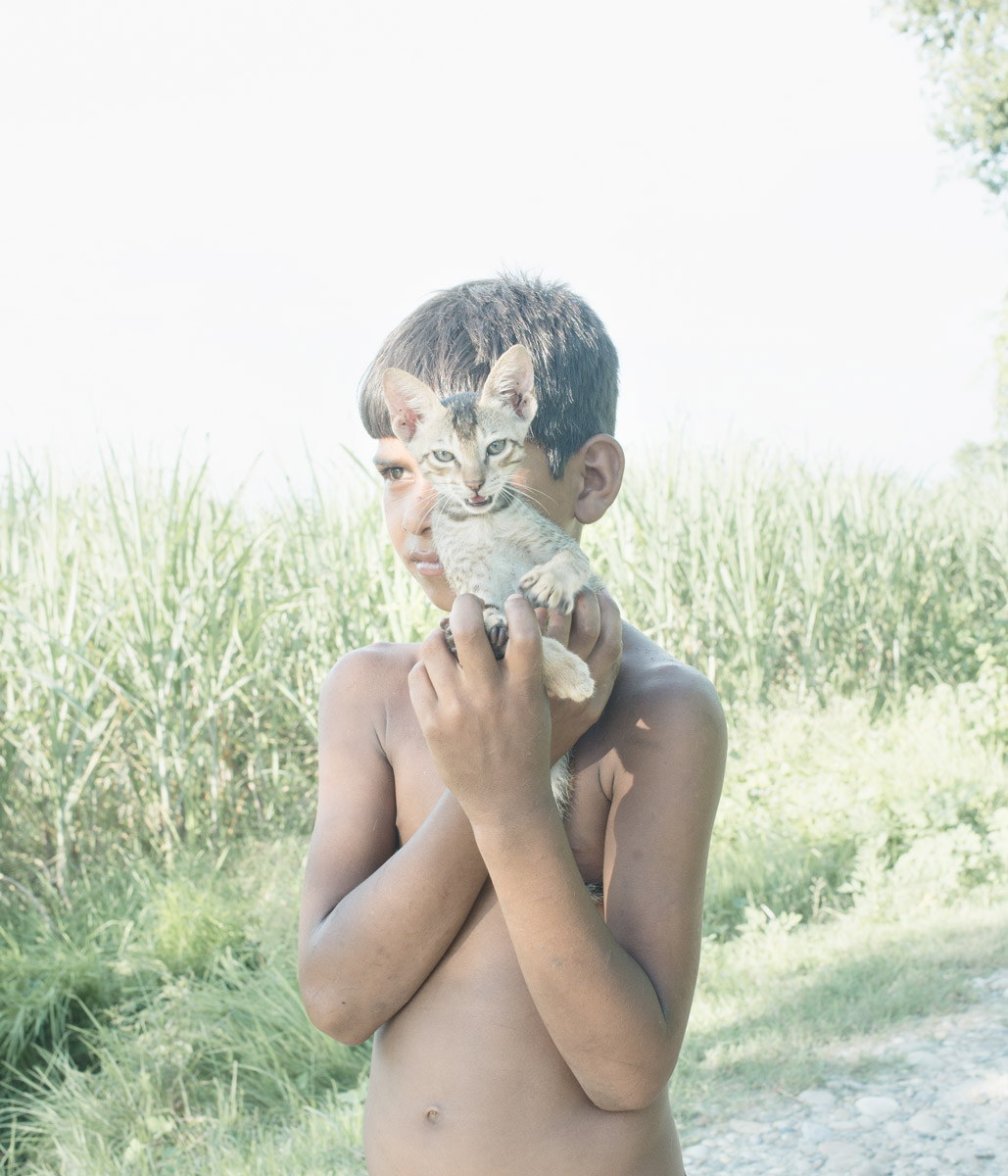
"The settlement of Susta was once perched firmly on the west bank of the Narayani River, long considered the border between Nepal and India. But the river has changed course, cutting persistently into Nepali territory.
Susta today finds itself on the east bank of the Narayani. India maintains that the new course of the river is the international boundary while Nepal disagrees. Susta, thus, remains contested – claimed by Nepal, hemmed in on three sides by India and on the other by the Narayani.
I’ve been visiting Susta for a couple of years now, and every single year, I’ve heard of a couple of hundred hectares being eroded by the river. Every year, someone or the other loses their farmland, their livelihood. Now, however, retaining walls have been put up along the banks in preparation for a bridge that was supposed to be built a few years ago.
Good signs, however, are few when it comes to Susta’s volatile politics; not much has changed on that front. In spite of persisting problems, locals are hopeful. I, however, am inclined to be a little more skeptical: if there’s anything Susta’s history has shown us, it’s that hope is best leavened by caution but hope is necessary and in the case of Susta even powerful."
Riti Sen Gupta is a photographer based out of Calcutta, India. Her practice is an inquiry into the ideas of identity, memory and the politics of gender. Along with photography, Riti works with text, found information, collages and illustration. With her work, she wishes to deconstruct the ways in which women have been traditionally represented in Indian photography.
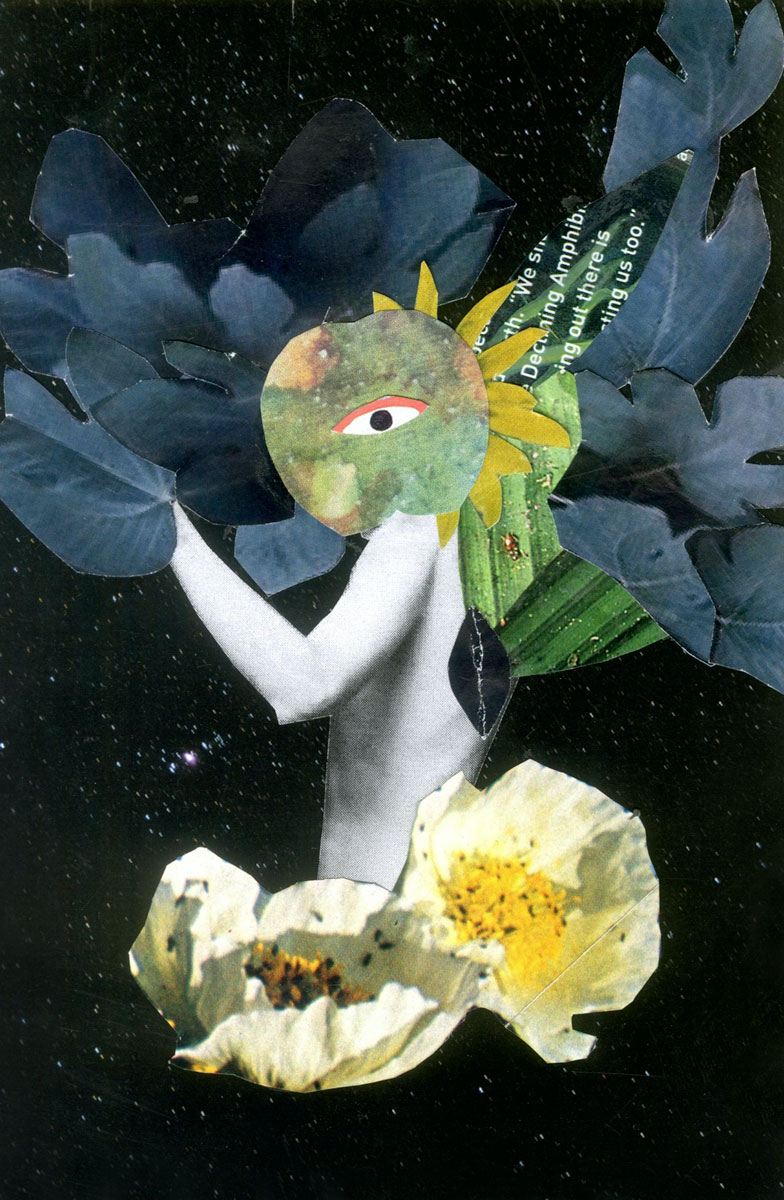
"The idea for creating this series was created after reading Rabindranath Tagore's Bolai. I found inspiration in this story about a little boy and his attachment towards nature.
Although the text became a starting point for my reflections, I did not want my images to simply illustrate it. So I invented a parallel world, which just indirectly correlates with the story. My story is about the dreams of every person to break away from inhibitions and fly off to a distant unknown, in search of his true identity."

"At a time when the embers of a violent agitation for Gorkhaland were slowly dying down, I travelled to Darjeeling in an attempt to understand the situation in the hills and its people. This work is a memory of my time in the quaint hill stations.
Through drizzle and impenetrable fog, I became a part of the lives of the people I spent my days with. I travelled from one village to another, living with families who welcomed me into their homes and offered me food and shelter. As I spent more time in this place, my understanding about the Gorkha community as well as the Gorkhaland movement began to change and my conscience demanded me to relook at the notions I had in the past. I began to realize that the fight for Gorkhaland is not merely a demand for territory - its roots lie far deeper. It is essentially a fight for social identity.
I sought out its history: a land of incomparable beauty originally inhabited by the Lepchas and other tribes; the British who took it for themselves in the mid-1800s so they could remember home; the vast tea gardens with which the British replaced pine forests to produce the world’s finest tea; and a demand for statehood which was almost a 100 years old. In the enmeshed lives of the people I photographed—of various castes, tribes, religions, and cultures—lived at the measured pace of a small town, I discovered a society which managed to endure even under threat from cynical politics and a fading identity. With this work I have tried to look at the notion of identity and the sense of uncertainty in everyday life, merging memory with politics, to create a portrait of a place and its people."
Ipshita Maitra is an artist and a film maker based in Goa. Her practice incorporates photography, print making and mixed media collages. With themes that are influenced by the landscape she occupies they stem from a deep sense of loss and begin as archival records to document the passing of a time - geographically & culturally. She asks questions of identity and belonging, juxtaposing them with time and memory.
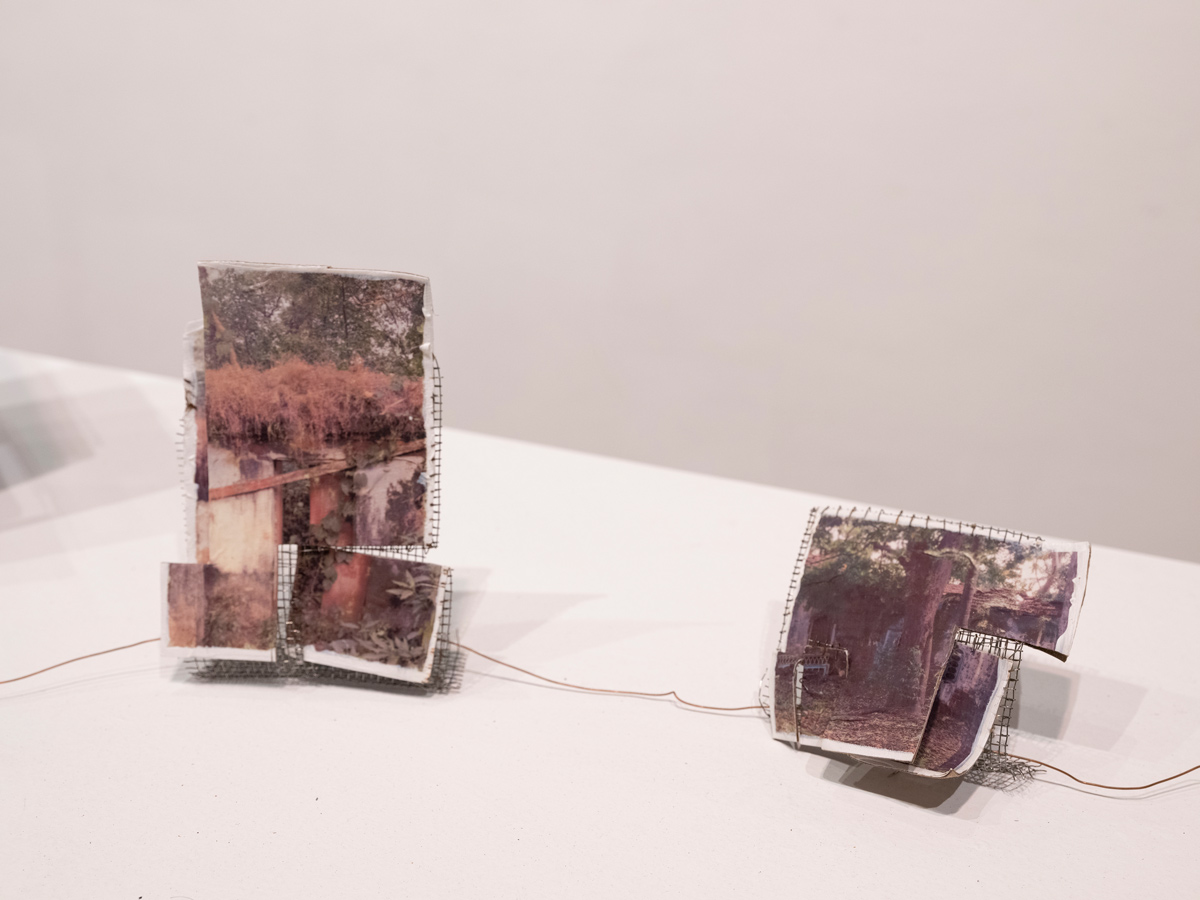
Does one draw a line around the space we consider home, can one confine it to a physical space, is it a repository of lived experiences, gathered and woven together into a patchwork like tapestry.
How do we feel when the markers that trigger memory disappear, when this visual tapestry built over years of time is suddenly full of holes. What does this urban take over mean in the context of systemic gentrification rapidly changing the demographics of the place. Do we remain the same people within these transformed spaces, suddenly displaced, while at home. Is our identity slightly altered now, our relationship to the place slightly skewed, does an inner homelessness settle and become a space of comfort.
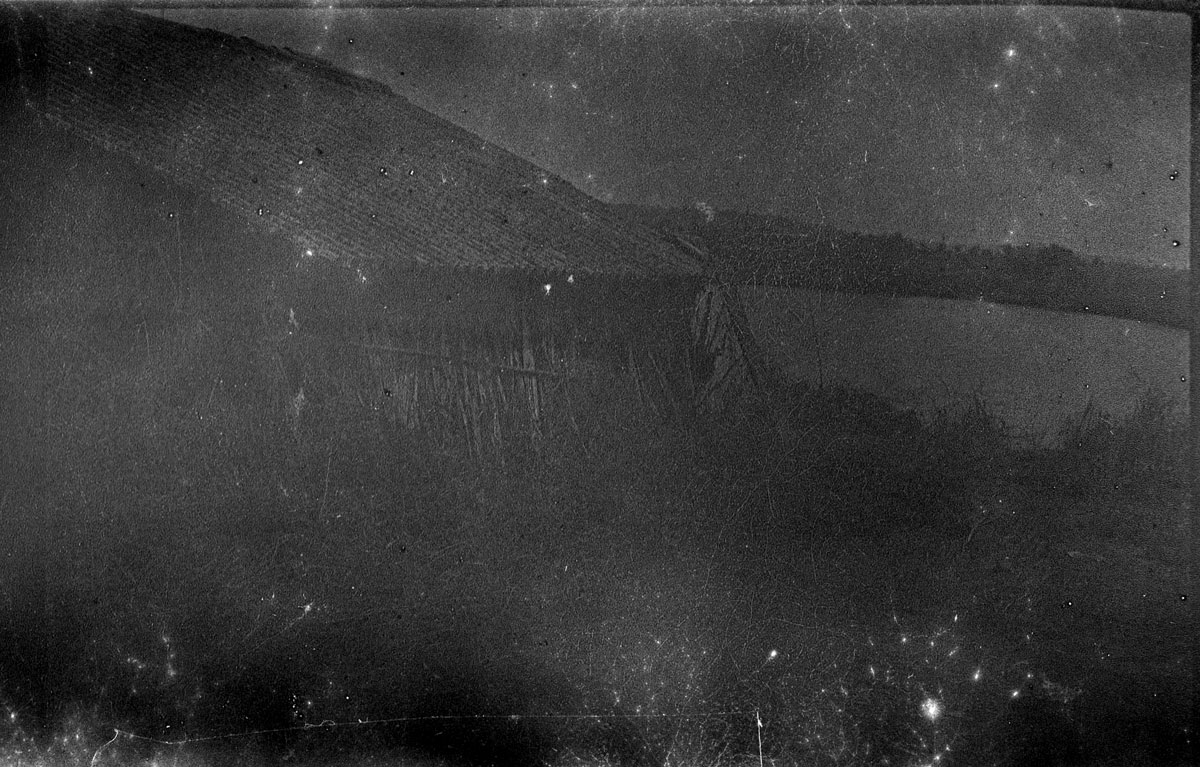
Tapping into the inner workings of the feminine, understanding her both as a woman within a body, and as an essence Gaia - the feminine principle of creation, we seek to understand the journeys of how women inhabit their bodies, beyond the gaze of patriarchy.
Through surreal imagery that alternates between the fragmented body and landscapes that seem suspended in time, questions about our relationship with both our inner and outer terrain are brought to the forefront.
Confinement, freedom, alienation, transformation, shedding, cycles. Creation assumes a multidimensionality, planes between the real and imagined, manifest and un manifest collapse. A terrain of wilderness that exists within is unleashed.
Samsul Alam Helal is a freelance visual Artist based in Dhaka, Bangladesh. He love to make fiction to question the reality. His aim is to go beyond the socio-cultural and political issues which are primary interests. He explores identity, dreams, longings and play with the psychological realm of these issues to understand the deeper marks it creates. In his recent practice he does photography, video and installation. Helal’s work represents a reality in an alternate space.
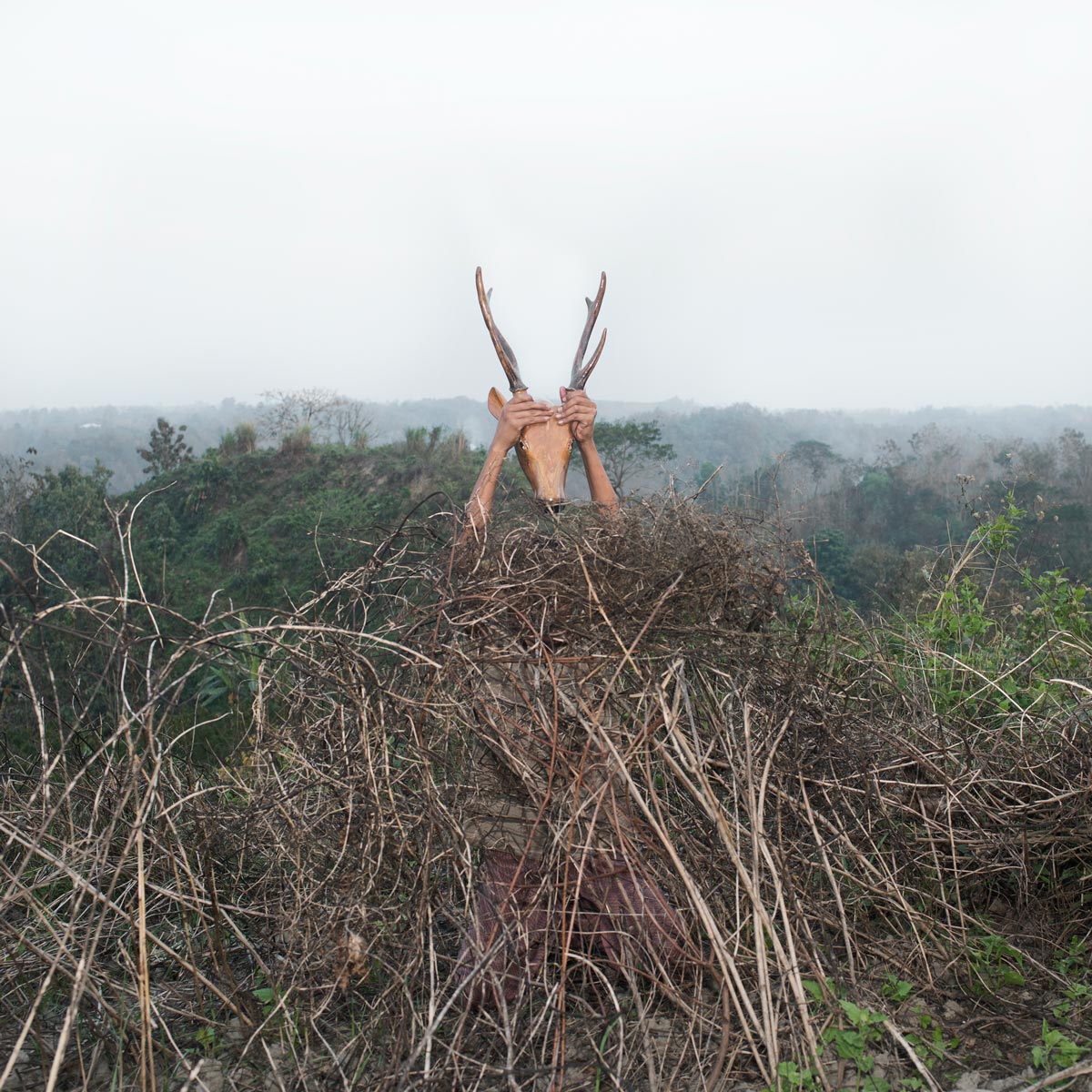
Disappearing Roots addresses displacement in the hill tracts of Bangladesh. The Kaptai dam was built in 1962 as a hydropower source, and it produces about 5% of the total electricity consumed by Bangladesh.
People were displaced as a result of it; the palace of the Chakma king is also buried deep in the lake. A ‘chair’, symbolic representation of throne travels around the indigenous communities, at times the chair sits alone in the landscape, which is constantly under threat by the majority. Through sound, photographs, 3D model and video, the work aims to capture the remaining traces of the ancient ways of life, highlighting the violence of gentrification.
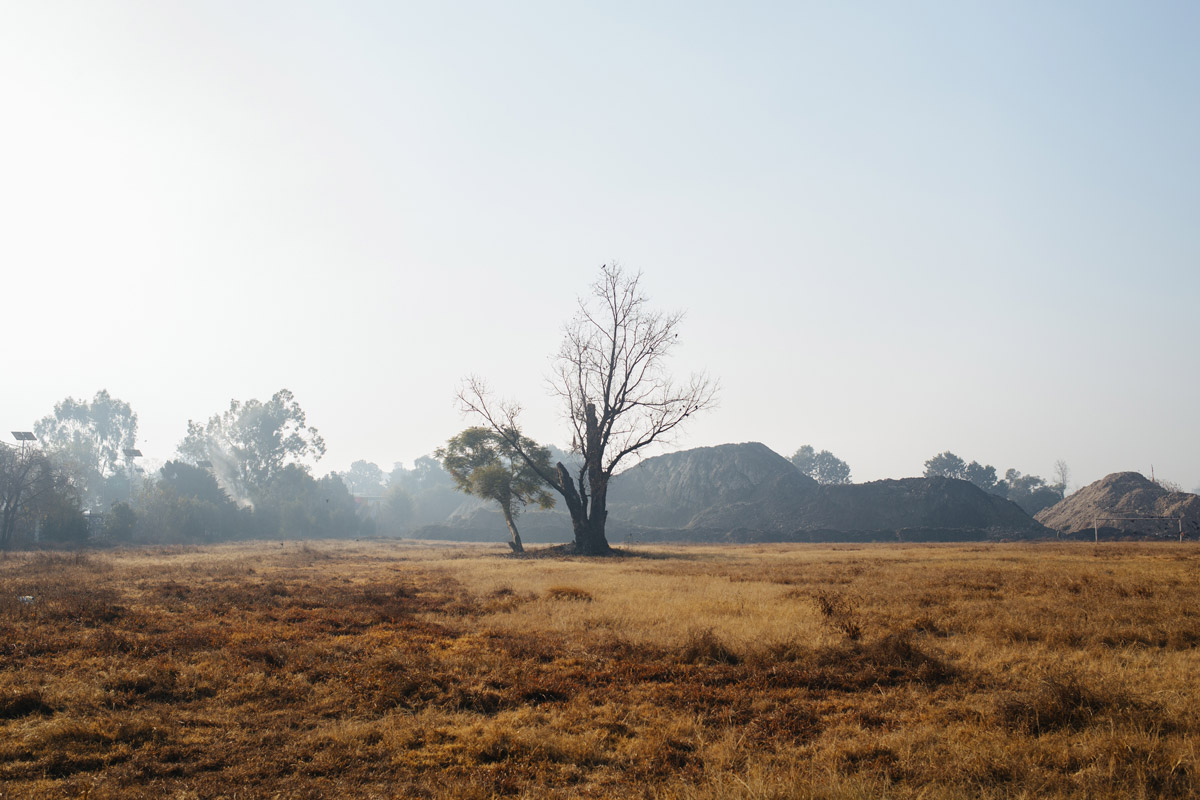
Tundikhel, often referred to as ‘the lungs of Kathmandu’, is an open, public space of social, political, historical and cultural importance. What was once a wide and undivided open space in the heart of Kathmandu, almost 5 kilometres in length and 300 metres in width, has now been reduced to a fraction of its original size.
Despite the growing concerns and protests by locals and activists, encroachment of this land continues. The case of Tundikhel reflects a larger problem of gradual decrease of public space in the city and controlled access to the limited spaces that do remain.

Growing up I eagerly waited for my cousins, uncles and neighbours to come back home from the UAE. More than their arrival, I looked forward to the chocolates and presents they brought.
As they grew older and returned to Nepal for good, it was time for the younger generation, including my siblings and friends, to leave. While some left in search of better career opportunities, most were compelled by financial obligations back home.
As migrant workers, Nepalis can never get citizenship in the UAE. Their hopes and dreams are timed and measured by their inherently exploitative employment contracts. Here, they merely hold a temporary space.
Priyadarshini Ravichandran is a photographer from Tamil Nadu working closely with recurrent themes emerging in her own life and relationships. She is compelled to tell stories of women, their lives and the land. Poetics and interconnectivity inform her practice. Her process involves meandering, which often leads her to the heart of things. She finds it ambiguous if her work is propelling her life or the other way.
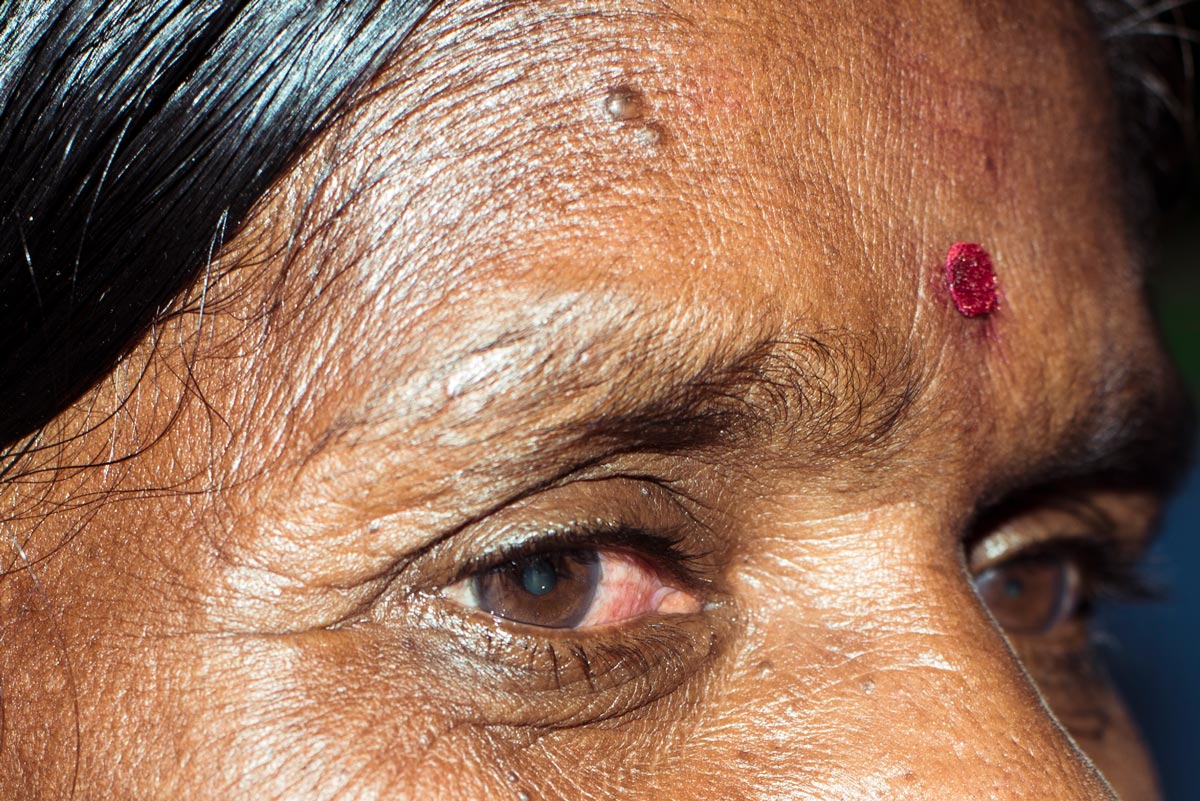
Sudaroli* is a studied repository of images addressing subtleties of psychological, social and economic violence inflicted upon women and their stories of resilience.
Sudaroli attempts to reflect the connected, relational and non-linear nature of gender based violence, inviting us to question the messages they communicate, becoming sparks for newer conversations. And as a reminder to confront the uneasy and stand up to claim power in compassionate ways.
*Sudaroli in Tamil translates as blaze, to burn brightly.

One midday, I was led by
Chinni, a dog, into a house.
Along with many living
creatures moving in and out,
in every turn of the house,
was Sundari.
The trees around were the
only ones older than her.
I was immediately taken into
their lives - brimming with
mysteries one afternoon at a
time. Here, time had learned
to stretch and falter, allowing
unusual connections. And I
could hide and seek.

PhotoKTM creates conversations between the city, its public, its past, and its aspirations. The festival invites photographers and other practitioners who engage with or through the visual medium to develop, showcase and participate in an exhibition program, workshops and symposia, a residency, an incubator program for practitioners from across South Asia, a local arts education program for young people in the city, and various collaborative pop-up events among other core and collateral programming.
PhotoKTM is committed to the visual, to the public, to history as well as to contemporary practice in all its plurality, to artistic, political and ideological expressions and actions that disrupt and resist but also repair, and to creating time and space to come together to describe the world, and discuss the world with shared concern and agency.
What kind of community and collective imagination might such a coming together make possible? What prospects might this ‘we-feeling’ catalyze, despite or perhaps because of its ephemeral nature?
Each edition of PhotoKTM builds on these ideas of assemblage and collectivization. It platforms several collaborative artistic, research and pedagogic initiatives that attempt to feed into on-going local conversations and campaigns. Photo Kathmandu is organized by photo.circle, a platform for photography based in Kathmandu founded in 2007.
Banner image: Priyadarshini Ravichandran, Sundari, [detail]. © and courtesy of the artist.
All images on page: © and courtesy of the artists.
Autograph is a space to see things differently. Since 1988, we have championed photography that explores issues of race, identity, representation, human rights and social justice, sharing how photographs reflect lived experiences and shape our understanding of ourselves and others.